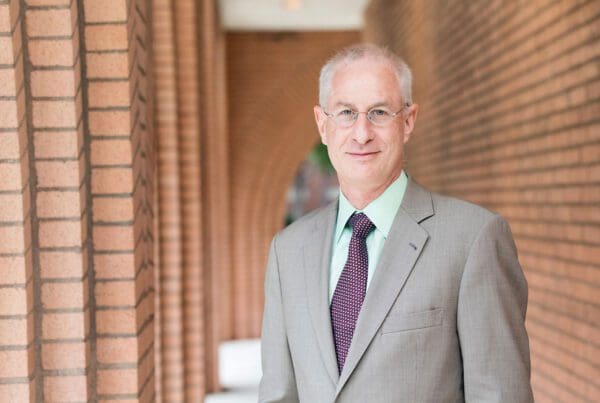As the COVID-19 pandemic stretches into 2022 and vaccination campaigns continue across the world, individual health behaviors are still a key factor in the risk of COVID-19 diagnosis, according to a new USC study.
A new paper by USC Leonard Davis School of Gerontology researchers illustrates how an individual’s physical distancing behaviors, such as avoiding large gatherings, can significantly decrease the risk of COVID-19 diagnosis, even in the presence of other structural risk factors, such as high local infection rates.
“Personal mitigation behaviors related to social distancing appear to influence risk of COVID-19 even in the presence of social factors related to infection risk,” said Theresa Andrasfay, the study’s first author and postdoctoral scholar at the USC Leonard Davis School. “Our findings emphasize the importance of individual behaviors for preventing COVID-19, which may be relevant in contexts with low vaccination.”
The study examined responses from the COVID-19 survey of the Understanding America Study from June 2020 through April 2021. The UAS includes a panel of approximately 9,500 respondents representing the entire United States and is administered by the USC Center for Economic and Social Research.
Andrasfay and colleagues focused on respondents’ answers to questions about whether they had been diagnosed with COVID-19 and if they have taken part in 11 risky behaviors, from going out to bars or restaurants to hosting non-household members at one’s residence. The team was able to adjust the data based on sex, age, race/ethnicity, education, employment status, living arrangements, as well as the statewide 7-day COVID-19 case rate at the time of responses.
The researchers found that individuals who reported attending large gatherings were more than 40% more likely to have been diagnosed with COVID-19 than those who did not report unsafe behaviors, even after adjusting for demographic factors and local case rates. In respondents who took part in more than one of the risky behaviors included in the survey, each additional risk taken increased the likelihood of COVID-19 diagnosis by another 8 to 9%.
Even among those who avoided risks involving large gatherings, taking part in smaller gatherings still increased the risk of diagnosis by 30%. This is consistent with earlier research suggesting that small birthday gatherings were associated with household COVID-19 infections, Andrasfay noted.
The survey didn’t include detailed measures about mask wearing, such as type of mask worn and how diligently one wore it, which limited the researcher’s ability to detect the protective effect of mask wearing in the study. “However, we know from many other studies that high quality masks are one of the best ways to prevent COVID-19,” Andrasfay said.
Even with research into treatments and a push for widespread vaccination, the study highlights the continuing importance of individuals reducing their risk though behavior, especially physical distancing and avoiding large gatherings, she said.
“For much of the COVID-19 pandemic, nonpharmaceutical interventions, including behavioral modifications, were the only defense against COVID-19,” Andrasfay said. “Although vaccines are now widely available in the United States, the surges in infections fueled by the Delta and Omicron variants underscores that behavioral modifications continue to be important for reducing the spread of COVID-19.”
About the study
“Adherence to Social-Distancing and Personal Hygiene Behavior Guidelines and Risk of COVID-19 Diagnosis: Evidence From the Understanding America Study” first appeared online in the American Journal of Public Health on December 22, 2021. Andrasfay’s coauthors included PhD candidate Qiao Wu, postdoctoral scholar Haena Lee, and University Professor Eileen Crimmins, all of the USC Leonard Davis School.
This study was supported by the National Institute on Aging (grants T32 AG000037 and P30 AG017265). The collection of the Understanding America Study (UAS) COVID-19 tracking data are supported in part by the Bill & Melinda Gates Foundation and the National Institute on Aging (grant U01AG054580).





